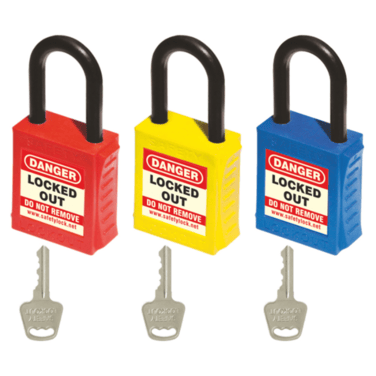


When it comes to workplace safety, a Lockout Padlock is more than just a tool – it’s a frontline safeguard against fatal errors.
When it comes to workplace safety, a Lockout Padlock is more than just a tool – it’s a frontline safeguard against fatal errors. Yet, even the most reliable padlock can’t protect workers if it’s misused. Whether you’re in maintenance, operations, or EHS, understanding the common pitfalls in padlock usage is key to ensuring full compliance with Lockout Tagout protocols.
Mistake #1: Using Shared Padlocks
Shared padlocks might seem convenient, but they’re a direct violation of LOTO principles. Each worker must apply their own personal padlock to maintain accountability and prevent accidental energization.
Solution: Assign uniquely keyed padlocks to each authorized employee. Opt for high-visibility labels that include name, department, and contact details.
Mistake #2: Skipping Padlock Inspection
Padlocks are not immune to wear and tear. Corrosion, damaged shackles, or broken keys can all compromise lock integrity and increase safety risks.
Solution: Incorporate padlock inspections into your regular safety audit. Maintain logs and replace defective locks immediately.
Mistake #3: Reusing Padlocks for Multiple Energy Points
Applying a single padlock to multiple isolation points undermines the effectiveness of the lockout. It also complicates verification during group operations.
Solution: Use one padlock per isolation point. For group lockouts, implement a lock box system where each worker places their personal padlock after verifying zero energy.
Mistake #4: Poor Visibility and Labeling
A padlock without proper labeling is an anonymous safeguard – a risky gamble. In emergencies, unlabeled locks delay response time and blur responsibility.
Solution: Use high-contrast tags and laser-engraved padlocks. Consider bilingual labels for diverse teams and global worksites.
Mistake #5: Using Padlocks Not Designed for Safety
A standard padlock may not meet industrial safety standards. These locks lack features like non-conductive bodies, key-retaining mechanisms, and corrosion resistance.
Solution: Choose safety-grade padlocks certified for LOTO applications. Nylon bodies, stainless steel shackles, and key-retaining mechanisms are non-negotiable features.
Get Padlocks That Raise the Standard, Not Just Meet It
At E-Square Alliance, we specialize in manufacturing and supplying OSHA standard lockout padlocks customized for your industry. Whether you’re in oil & gas, pharmaceuticals, food processing, or power generation – our solutions ensure you’re not only compliant but confident.
Understanding padlock types helps prevent misuse and matches equipment to your safety protocols.
| Padlock Type | Key Features | Best For |
| Nylon Body Padlocks | Non-conductive, lightweight, corrosion-resistant | Electrical panels, clean rooms |
| Aluminum Body Padlocks | Durable, laser engravable, rust-resistant | General-purpose mechanical lockouts |
| Steel Shackle Padlocks | High strength, long shackles available | Valves and hard-to-reach points |
| Plastic Shackle Padlocks | Non-sparking, non-conductive | Explosive or sensitive environments |
| Color-Coded Padlocks | Visual distinction for teams or departments | Group lockouts, shift differentiation |
Make Safety Personal. Make Safety Professional.
If you’re serious about eliminating human error from your Lockout Tagout process, upgrade your padlock strategy today. Reach out for tailor-made solutions, detailed catalogues, and multilingual support across India and beyond.
